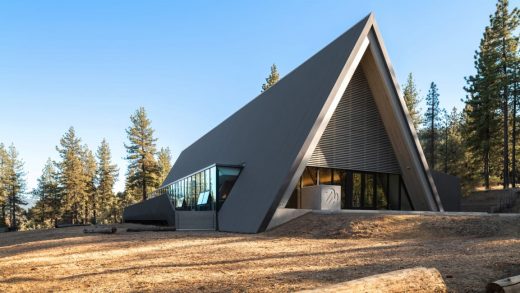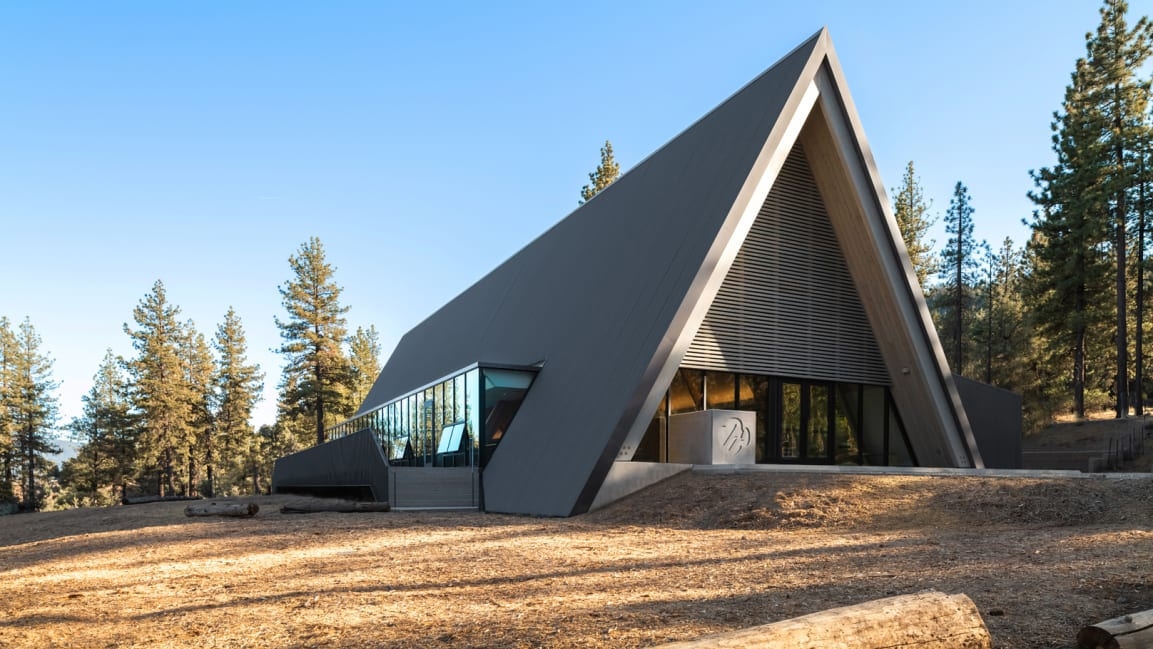The classic A-frame cabin gets a sleek redesign
The A-frame cabin has been a mainstay of wilderness getaways since the 1930s. Originally designed by modernist architect Rudolph Schindler for what he called an “all-roof” home in Lake Arrowhead, California, the triangular building form has become a go-to for homes and cabins in woodsy locales.
The simple roofs-that-are-also-walls structure rises like a tree in the woods, and its no-nonsense construction means it’s resilient in the whiteouts of a snow dump while also being spacious enough to accommodate either a family getaway or a vanful of ski bums.
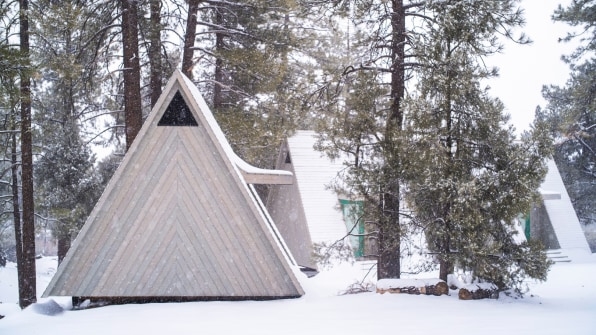
But since Schindler’s first A-frame was propped up, not much has changed. Now, a new take on the A-frame cabin is showing how this mountain town classic can perform better year round, while also being much easier to build.
This upgraded A-frame is the core architectural move at the newly renovated Camp Lakota in the Southern California mountain town of Frazier Park. Used year round by the Girl Scouts of Greater Los Angeles to host wilderness experiences for its troops, the camp has been around for a half a century but was in need of a refresh after a fire destroyed its dining hall.
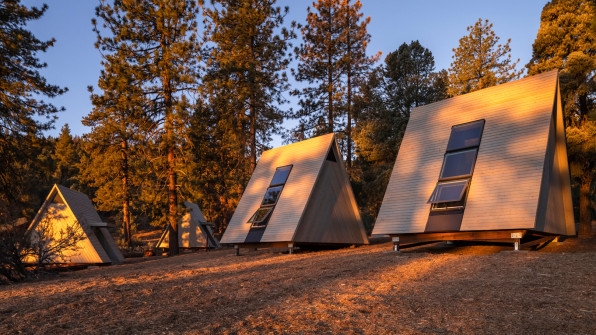
The refreshed camp features 24 A-frame cabins, an oversized A-frame dining hall and—why not?—bathrooms that look like A-frames sliced down the middle. It was designed by the architecture firm Perkins & Will.
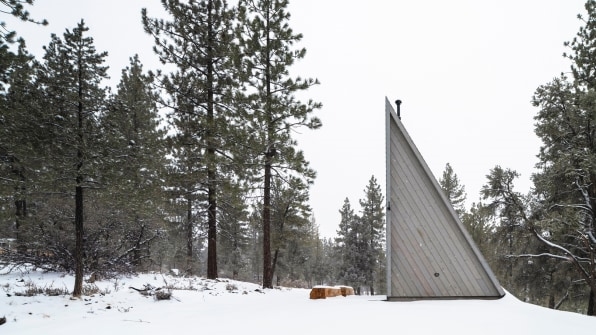
Leigh Christy, a principal at Perkins & Will’s Los Angeles studio, says the A-frame design was selected partly to call back Schindler’s early mountain design and the shape of old army tents, as well as to reference the tepees used by the Lakota people for whom the camp is named. There were also practical considerations. “One of the things the A-frame is quite good at is passive ventilation,” Christy says. Located at an elevation of 5,400 feet, the camp is prone to snowfall in winter but also the hot summers of Southern California. Adding on to the A-frame’s natural insulation, the cabins are fitted with a high level of insulation in the walls, and a tight building envelope that enables them to passively maintain their interior temperature.
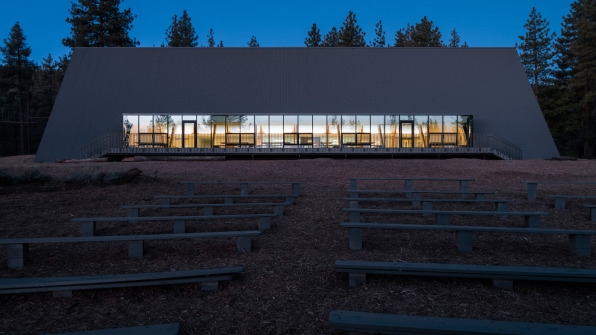
The camp is broken down into small clusters of buildings, like a set of cabins surrounding a campfire area with a bathroom nearby, and also an area intended for tent camping with bathrooms nearby. Christy says the design team worked closely with the Girl Scouts organization to ensure the space would feel safe for troops of young girls coming from the largely urbanized reaches of the L.A. area. “We were very focused on what would make them comfortable taking their first steps out into the wilderness,” she says.
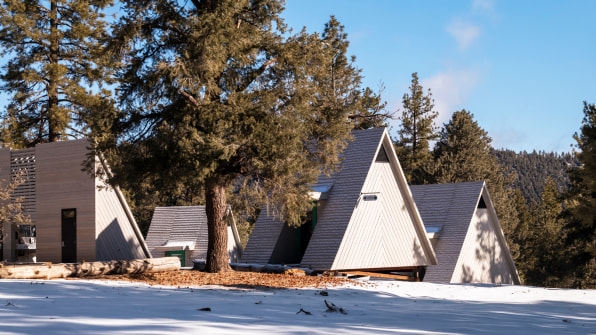
The cabins each house four bunk beds, with room for eight campers, and are all oriented to optimize their views. Though A-frames typically use the face of the A for windows and doors, this updated design moved the windows to one of the slanted roof walls and the door to the other. The windows are stacked to create a tall vertical panorama of the mountains and night sky. “It was about trying to take advantage of this natural setting and not destroy and not obscure it,” Christy says.
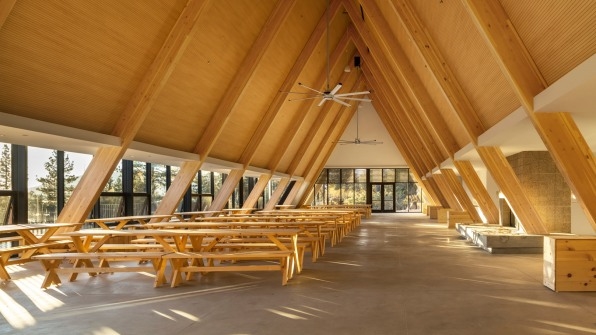
The cabins are also notable for the way they’re built. Construction is notoriously complicated in the kinds of rustic and remote places where cabins are best enjoyed, with limited road access making it difficult to transport materials and the heavy equipment it takes to construct a building.
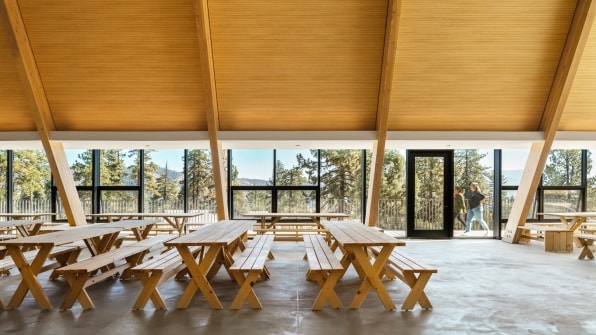
Perkins & Will’s architects sidestepped those complications through prefabrication, designing the structures to be built with structural insulated panels, or factory-built segments that can be flat packed for delivery and easily connected into complete buildings on site. Each cabin is made from 15 panels, which have the building’s exterior, insulation, and interior finishes combined into one piece. “It was somewhere in between architecture and product design,” Christy says.
To minimize the impact of the buildings, they were designed to sit on four piles, with fire-resistant mass timber floors to help reduce their carbon impact.
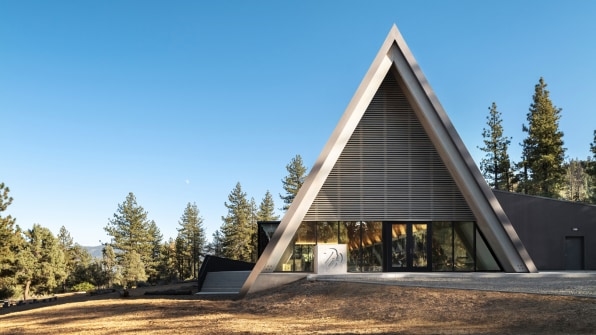
That wood choice also guided the design of the much larger A-frame that serves as the camp’s new dining hall and multi-purpose room. Large beams of cross-laminated timber form the spine of the building, and acoustical treatments fill the space between. “If you have 200 to 300 Girl Scouts in there chattering and using dishes, it could get quite loud,” Christy says. With such expansive space, the room can accommodate both big meals and events around its big central fireplace.
In these new forms, the classic A-frame has been recast for the 21st century, while still holding onto its original, essential wilderness roots. “We call it rustic comfort,” Christy says.
(31)

